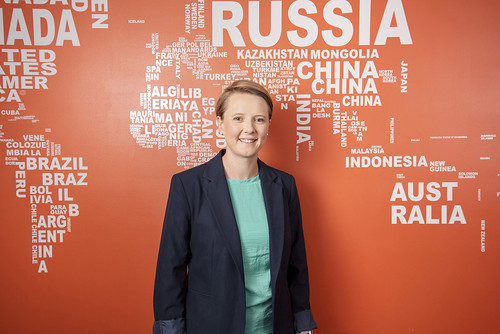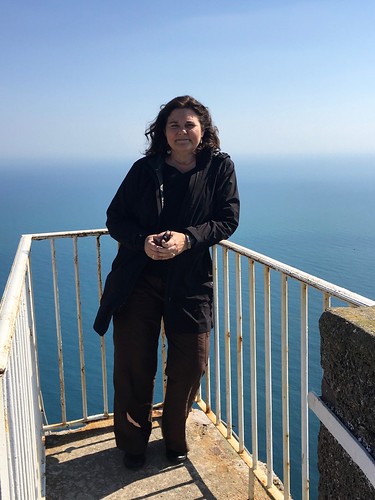Auburn University alumna becomes new executive director of semester-long study abroad option in Ariccia, Italy
Article body
Lacey Armstrong, once a participant in the Joseph S. Bruno Auburn Abroad in Italy program, is now its executive director.
The 2010 alumna of Auburn University took over this fall when Linda Cain Ruth returned to her role on the faculty of the McWhorter School of Building Science in Auburn’s College of Architecture, Design and Construction.
“I always said that if there was a way for me to come back to the program, I would,” Armstrong admitted. “I had fallen so much in love with Italy as an undergrad that I requested, and was lucky to receive, Italy as a duty station from 2015 to 2018.”
For Ruth, when the overseas position became open seven years ago, she said “it was the right challenge at the right time.”
Ruth succeeded Marilyn Bradbard, who led what is still Auburn’s only permanent overseas campus, from 2006 to 2011. The College of Human Sciences began offering a study abroad trip to Ariccia, Italy in 2002. It was named Joseph S. Bruno Auburn Abroad in Italy in 2007, with a $3 million endowed gift from the Joseph S. Bruno family.
Jera Stribling, executive director of the Joseph S. Bruno Charitable Foundation, said the family made the generous gift because “study abroad programs provide the environment and opportunity for the development of students as successful leaders and engaged global citizens.”
By moving back to Auburn and resuming her faculty role on campus, Ruth said she can reconnect with friends and family, especially her 90-year-old mother who has made her promise to take some trips together.
“She is the one that gave me my wanderlust,” said Ruth of her mother. “I am most looking forward to catching up on making new memories with her.”
Armstrong said she too loved to travel, but never considered studying abroad as an Auburn student until she heard about the Italy program. The summer of 2009 provided her the opportunity to gain trust, confidence, compassion and teamwork.
“All of these transformed my personal and professional life,” she said. “I entered my career as a U.S. Army officer and dietician better able to understand the various backgrounds of my fellow soldiers and patients. In an organization that is constantly shifting and with people constantly moving, the trust and teamwork skills I developed helped me adapt quickly to new coworkers, environments, leadership teams and organizational priorities.”
After earning a bachelor’s degree in nutrition and dietetics from Auburn, Armstrong completed the U.S. Military-Baylor University Graduate Program in Nutrition and U.S. Army Dietetic Internship, where her graduate studies focused on heart health of wounded warriors at Walter Reed National Military Medical Center.
Armstrong spent eight years as a registered dietitian in the Army, focusing on injury prevention, human performance and sports nutrition in airborne soldiers and improving the nutrition environment for military families. Her final tour of duty was at the U.S. Army base in Vicenza, Italy.
She willingly ended her military career simply for the chance to return to Ariccia and the study abroad experience. Many past participants return to the program as graduate teaching assistants, but that wasn’t a possibility for Armstrong’s graduate work with the military.
“When I saw the executive director position posted online, I had to make the hard, but right decision to submit my Army resignation and go all-in in hopes that I would be selected for this opportunity,” Armstrong said.
Ruth faced a similar decision when she decided to leave Italy, knowing it would divide her heart between two countries.
“I’m not sure that my life has so much changed from this experience as it has been enriched beyond measure — that seems to be an understatement — through the people, places, experiences and above all, the students with whom I have had the privilege of sharing three of the most amazing months of their college experiences,” she said.
Ruth knows she has welcomed exactly 421 students in seven years and has countless memories from each class. She noted that her late husband, D.K. Ruth, always believed in leaving a place better than you found it.
“D.K. and Sambo (Mockbee) left Auburn with the Rural Studio,” Ruth said. “I’m not comparing my impact to the enormity of theirs, but I hope I have made a positive difference on the program.”
Rural Studio is an off-campus design-build program in Auburn’s School of Architecture, Planning and Landscape Architecture. It was established in 1993 by D.K. Ruth and Samuel “Sambo” Mockbee to give architecture students a hands-on educational experience while assisting an underserved population in West Alabama’s Black Belt region.
Armstrong credited both Bradbard and Ruth for laying “amazing roots” and fostering a program that continues to grow and flourish. With her experience as a former participant and her skills from the Army, she said she’s prepared to ensure each student “will walk away from this experience confident in their leadership skills and ready to jump into challenging and rewarding careers.”
To learn more about the Joseph S. Bruno Auburn Abroad in Italy program, visit http://humsci.auburn.edu/italy/index.php or contact Megan Elliott in the Office of Global Education at 334-844-3748 or mme0018@auburn.edu.
Related Media
More Information
The Joseph S. Bruno Auburn Abroad in Italy program is a modern equivalent to the Grand Tour of the 17th and 18th centuries, when educated European men and women would end their formal education with a trip around Europe, spending months, sometimes years, visiting the places and sites they had studied. Auburn students spend 12 weeks in Ariccia, Italy, earning 16 credit hours and an international minor.
The people of Ariccia have become accustomed to the influx and welcome a new group of Auburn University students every spring, summer and fall semester.
Students live and attend class in the Chigi Palace, which is famous throughout Italy as the prominent Italian artist and architect Gian Lorenzo Bernini was responsible for its design.
The noble Chigi family inhabited the residence for centuries, including when Cardinal Fabio Chigi was elected head of the Catholic Church in 1655. Chigi, who became Pope Alexander VII, was responsible for commissioning Bernini to design St. Peter’s Square in Rome. The colossal colonnades that surround the square like arms stretching out from St. Peter’s Basilica bear the pope’s name, as well as the Chigi family symbol, which can be found throughout Rome and Ariccia.
After the Chigi family gave the home and all its contents to the city of Ariccia in 1988, it became a public museum and location for special events such as concerts and weddings. Many of the furnishings are the same as they were four centuries ago.
Auburn students have been utilizing a section of the palace since a 2009 renovation created a gathering space, kitchen, a classroom and living quarters.
Media interested in this story can contact Communications Director Preston Sparks at (334) 844-9999 or preston.sparks@auburn.edu.
Auburn University is a nationally ranked land grant institution recognized for its commitment to world-class scholarship, interdisciplinary research with an elite, top-tier Carnegie R1 classification, life-changing outreach with Carnegie’s Community Engagement designation and an undergraduate education experience second to none. Auburn is home to more than 30,000 students, and its faculty and research partners collaborate to develop and deliver meaningful scholarship, science and technology-based advancements that meet pressing regional, national and global needs. Auburn’s commitment to active student engagement, professional success and public/private partnership drives a growing reputation for outreach and extension that delivers broad economic, health and societal impact.







